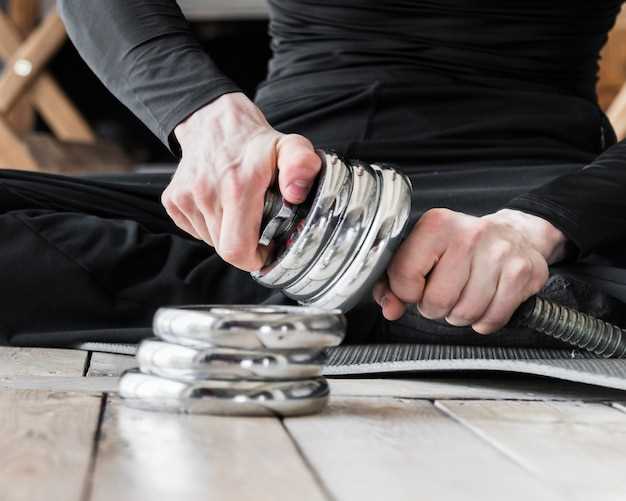
Your vehicle’s suspension system plays a crucial role in providing comfort and stability during your drives. One of the key components of this system is the shock absorber, which helps to dampen the impact of bumps and uneven surfaces on the road. Over time, these absorbers can wear out and lose effectiveness, leading to a range of driving issues that may compromise safety and performance.
Recognizing the signs of failing shock absorbers is essential for maintaining your vehicle’s overall performance. If you begin to notice excessive bouncing, a rough ride, or uneven tire wear, it might be a clear indication that the repair of your suspension system is necessary. Ignoring these symptoms can lead to further problems, including decreased handling capabilities and increased wear on other suspension components.
In this article, we will explore the critical signs that suggest it is time to replace your shock absorbers. Understanding these indicators not only enhances your driving experience but also ensures your vehicle remains safe on the road.
Unusual Noises When Driving
Hearing unexpected sounds while driving can be a clear indication that your vehicle’s suspension system, including the shock absorbers, may be in distress. If you notice clunking, rattling, or banging noises when passing over bumps or potholes, it suggests that the shock absorber might be failing to perform its function correctly.
Additionally, squeaking or creaking sounds during regular driving can indicate worn-out bushings or components within the suspension system. These noises can become more pronounced when turning or driving over uneven surfaces.
Ignoring these abnormalities can lead to further damage not only to the shock absorbers but also to other suspension parts, affecting overall vehicle control and safety. If you experience any unusual noises, it is advisable to have your suspension system inspected promptly to prevent costly repairs in the future.
Excessive Bouncing or Swaying
Excessive bouncing or swaying during driving is a clear indication that your shock absorbers may need replacement. A properly functioning shock absorber plays a crucial role in the vehicle’s suspension system, which is designed to ensure a smooth ride and maintain contact between the tires and the road. When shock absorbers begin to wear out, their ability to control the movement of the suspension diminishes, leading to increased body roll and excessive movement.
When you notice that your vehicle is excessively bouncing over bumps or swaying during turns, it can result in decreased handling, which poses safety risks while driving. This issue not only compromises your driving comfort but can lead to premature wear on other suspension components. If left unaddressed, the cost of repair may escalate as damaged parts strain against the failing components.
It’s essential to monitor your vehicle’s behavior. Here’s a quick reference table of symptoms associated with excessive bouncing and swaying:
| Symptoms | Potential Causes | Recommended Action |
|---|---|---|
| Excessive bouncing after hitting bumps | Worn out shock absorbers | Inspect and replace shock absorbers |
| Body sway during turns | Failed suspension components | Check suspension system; replace as necessary |
| Difficulty controlling the vehicle | Inadequate dampening effect | Assess shock absorbers and replace |
Timely replacement of shock absorbers not only enhances vehicle performance but also contributes to overall safety. Regular vehicle maintenance should encompass inspections of the suspension system to prevent significant issues from developing.
Diminished Braking Performance

One of the critical signs that your vehicle’s shock absorbers may need replacement is diminished braking performance. This issue not only compromises your safety on the road but also affects the overall handling of your vehicle.
Shock absorbers play a crucial role in maintaining tire contact with the road surface, especially during braking. When these components wear out, they can lead to several braking-related problems:
- Increased Stopping Distance: Worn absorbers can affect the vehicle’s weight distribution, making it take longer to come to a complete stop.
- Brake Fade: The reduction in shock absorption can result in consistent brake pressure, leading to overheating and reduced braking efficiency.
- Poor Stability: An inefficient suspension system can cause your vehicle to sway or dip when braking, making it more challenging to control, especially at high speeds.
Addressing diminished braking performance is crucial for vehicle safety. If you experience a longer stopping distance or instability while braking, it might be time to inspect your shock absorbers. Regular maintenance and timely repair can prevent further suspension-related issues, ensuring your vehicle remains safe and reliable on the road.
Uneven Tire Wear Patterns
Uneven tire wear patterns can serve as a crucial indication that your vehicle’s shock absorbers are failing. When the shocks in your suspension system are worn out, they lose their ability to adequately dampen road vibrations and impacts. This leads to inconsistent tire contact with the road surface, causing certain areas of your tires to wear down faster than others.
For instance, if you notice excessive wear on the inner or outer edges of your tires, it may indicate that the shocks are not properly absorbing the shocks from the road. Such wear can also compromise your vehicle’s handling and stability, making it essential to address any issues promptly.
Repairing or replacing faulty shock absorbers can help restore optimal contact between your tires and the road, ensuring even tire wear. This not only enhances driving performance but also extends the lifespan of your tires, ultimately saving you money in the long run. Regular maintenance of your suspension system is key to preventing uneven wear and ensuring a safe driving experience.
Leaking Fluid Around Shock Absorbers

One of the most noticeable signs that your shock absorbers may need replacement is the presence of leaking fluid. When you observe fluid pooling around or dripping from the shock absorber, it’s essential to address this issue promptly. Fluid leaks not only indicate potential damage to the shock itself but also compromise the overall functionality of the vehicle’s suspension system.
Shock absorbers are designed to control the amount of bounce and sway your vehicle experiences while driving. A leak decreases the effectiveness of the absorber, leading to a rough ride, increased braking distances, and difficulties in handling. Without proper fluid levels, the shock absorber cannot perform as intended, resulting in excessive wear and faster deterioration of your suspension components.
If you notice any signs of fluid leakage, it’s crucial to seek a professional inspection. Ignoring this problem can lead to more extensive repairs and even pose safety risks while driving. Timely repair or replacement of leaking shock absorbers can restore your vehicle’s performance and enhance your driving experience.
In summary, leaking fluid around shock absorbers is a clear indicator that repair or replacement is necessary. Acting on these signs will help maintain the integrity of your vehicle’s suspension and ensure safe operations on the road.
Visual Inspection: Signs of Damage
Regular visual inspections of your vehicle’s shock absorbers are crucial for maintaining effective suspension performance. Begin by closely examining the shocks for any signs of physical damage. Look for dents, cracks, or leaks in the shock body. Any visible fluid stains around the shocks indicate a loss of hydraulic fluid, which can significantly impair their function.
Inspect the mounting points as well. Worn or damaged mounts can lead to excessive movement of the shocks, further causing suspension issues. Pay attention to any rust or corrosion, particularly in older vehicles, which can compromise the integrity of the shock absorber. Additionally, check for unusual angles or misalignments in the shocks, as these can signal underlying problems that may require repair.
Examine the rubber bushings surrounding the shock mounts. If they appear cracked or deteriorated, they may need replacement. These components play a key role in damping vibrations and ensuring proper shock absorber function. Conducting a thorough visual inspection can help you identify red flags that suggest it’s time to replace your shocks before they lead to more significant suspension problems.







